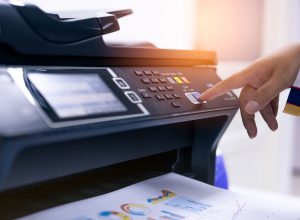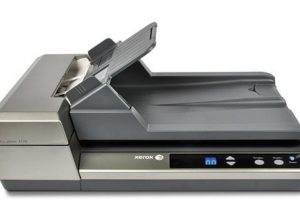Contents
- 1 Evolution of Image Scanners in Digital Art
- 2 Technical Fundamentals of Scanner Operation
- 3 Integration with Digital Workflows
- 4 Specialized Scanning Techniques
- 5 Post-Processing Capabilities
- 6 Application in Mixed Media Art
- 7 Quality Control and Archival Considerations
- 8 Future Developments
- 9 Technical Requirements and Specifications
Evolution of Image Scanners in Digital Art
Image scanners have transformed from simple document digitization tools into sophisticated instruments that play a crucial role in digital art creation and illustration workflows. These devices bridge the gap between traditional and digital art forms, enabling artists to preserve, modify, and enhance their physical artwork in the digital realm.
Technical Advancement in Scanner Technology
Modern scanning technology has evolved to incorporate high-resolution CCD sensors capable of capturing up to 6400 dpi, ensuring the preservation of intricate textures, brushstrokes, and media characteristics. Advanced color depth processing, reaching 48-bit color, allows for the capture of subtle tonal variations essential for artistic reproduction.
Integration with Digital Workflows
Contemporary scanners feature direct integration with professional editing software like Adobe Creative Suite, enabling seamless workflow automation. Artists can utilize batch scanning protocols and custom color profiles, maintaining consistent color accuracy across different mediums and projects.
| Scanner Type | Application in Digital Art | Key Features |
|---|---|---|
| Flatbed Scanners | Traditional artwork, illustrations, textured materials | High resolution, large scanning area |
| Drum Scanners | Professional art reproduction, gallery archives | Superior color accuracy, dynamic range |
| Portable Scanners | On-location texture capture, reference material | Mobility, instant digitization |
Artistic Applications and Techniques
Artists have developed specialized scanning techniques, such as multiple-pass scanning for capturing dimensional artwork and scanner-specific lighting methods to enhance texture details. These approaches enable the creation of unique digital compositions by layering scanned elements with varying opacity and blend modes, resulting in hybrid artworks that combine traditional and digital aesthetics.
Material Interaction and Capture
Contemporary scanners excel at capturing diverse artistic media, from watercolors and charcoal to mixed media installations. Advanced devices feature adjustable focal depths and specialized scanning beds, allowing artists to digitize works created with non-traditional materials while preserving their dimensional qualities and surface characteristics.
Technical Fundamentals of Scanner Operation
Modern image scanners utilize Charge-Coupled Device (CCD) or Contact Image Sensor (CIS) technology to convert physical artwork into digital signals. The scanner’s optical resolution, typically ranging from 300 to 9600 DPI, determines the level of detail captured during the scanning process. Professional-grade scanners often feature enhanced color depth, supporting up to 48-bit color processing for accurate reproduction of artistic nuances.
| Scanner Type | Resolution Range | Best Use Case |
|---|---|---|
| Flatbed Scanner | 300-4800 DPI | 2D Artwork, Sketches |
| Large Format Scanner | 600-2400 DPI | Large Paintings, Posters |
| Drum Scanner | 8000-9600 DPI | Professional Photography |
Integration with Digital Workflows
Contemporary scanning solutions integrate seamlessly with digital art software through TWAIN and WIA protocols. Artists can directly import scanned artwork into applications like Adobe Photoshop, Illustrator, or Clip Studio Paint. Advanced scanner drivers provide professional-grade color management tools, enabling precise ICC profile implementation for color-accurate digitization.
Specialized Scanning Techniques
Professional artists employ various scanning techniques to achieve optimal results. Multiple pass scanning reduces image noise and improves color accuracy. Transparency adapters enable the digitization of translucent materials, while descreening algorithms eliminate moiré patterns when scanning printed artwork. Custom scanning resolutions can be selected based on the intended output medium, whether for web display or print reproduction.
Post-Processing Capabilities
Modern scanning software offers sophisticated post-processing features tailored for artistic applications. These include automatic dust and scratch removal, custom color correction curves, and advanced sharpening algorithms. Vector conversion tools can transform scanned line art into editable paths, facilitating further digital manipulation.
Application in Mixed Media Art
Image scanners enable artists to combine traditional and digital techniques effectively. Traditional media such as watercolors, pencil sketches, or ink drawings can be scanned and enhanced digitally. Artists can layer scanned textures, apply digital effects, or incorporate scanned elements into larger digital compositions while maintaining the authentic characteristics of the original artwork.
Quality Control and Archival Considerations
Professional scanning workflows incorporate color calibration tools and quality control procedures. Regular scanner calibration using industry-standard targets ensures consistent color reproduction. High-resolution master scans are typically preserved in lossless formats like TIFF, maintaining maximum detail for future editing or archival purposes.
Future Developments
Emerging scanner technologies are expanding artistic possibilities through improved sensor sensitivity, broader color gamut capture, and enhanced texture recognition. AI-powered scanning solutions are beginning to offer automated artwork enhancement and style recognition features, streamlining the digitization process for artists and illustrators.
Technical Requirements and Specifications
Professional art scanning requires specific hardware capabilities and software configurations. Modern systems should support high-speed USB 3.0 or Thunderbolt connectivity, adequate RAM for large file processing, and calibrated displays for accurate preview and editing. Storage systems must accommodate large file sizes, often utilizing RAID configurations for data security.






![How DPI Affects Image Quality: Understanding Scanner Resolution [Complete Guide]](https://yoopst.com/wp-content/uploads/2025/07/dpi-300x220.png)